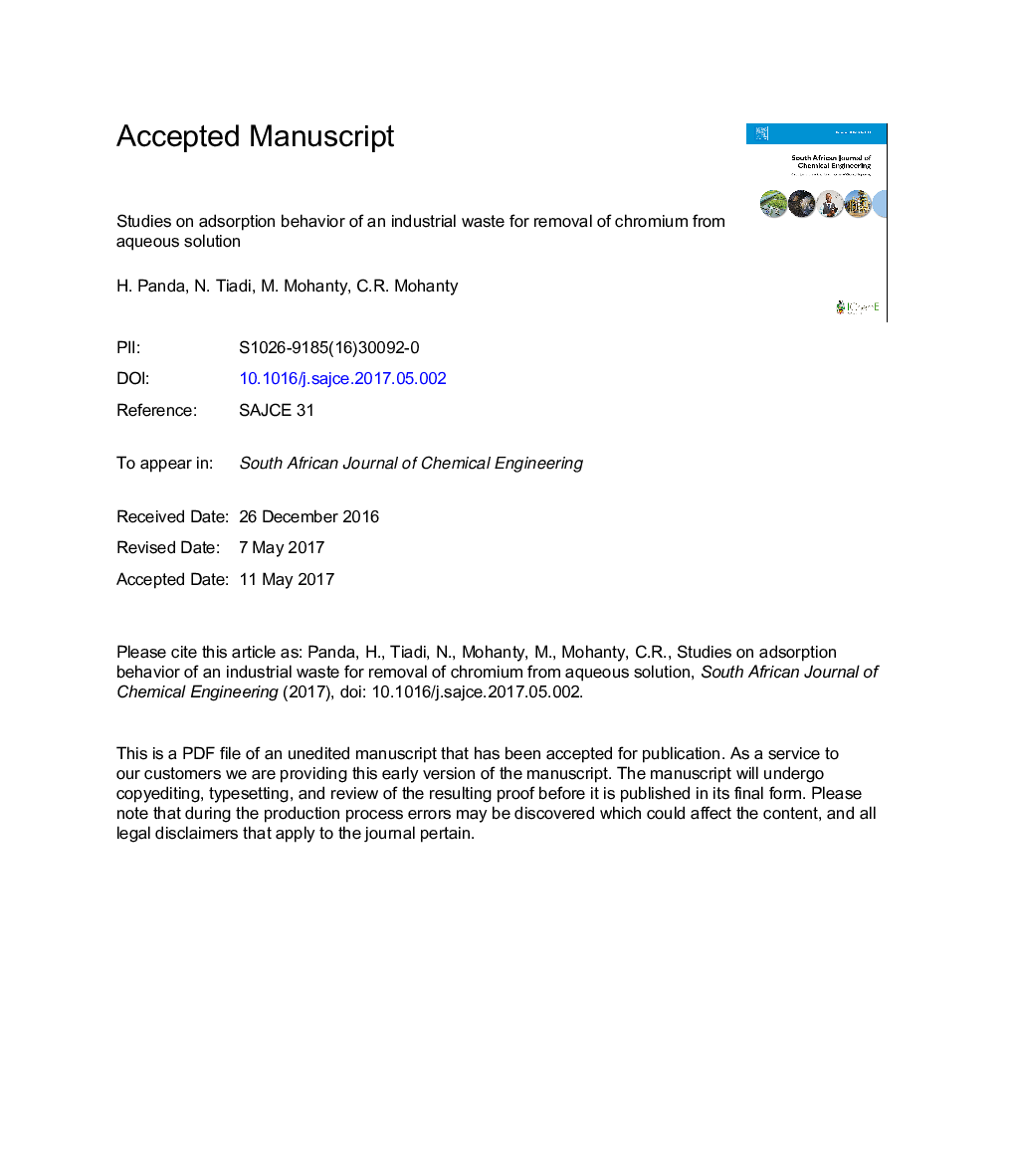| Article ID | Journal | Published Year | Pages | File Type |
|---|---|---|---|---|
| 8917122 | South African Journal of Chemical Engineering | 2017 | 22 Pages |
Abstract
An investigation on the adsorption characteristics of an industrial waste (Dolochar) for removal of Cr (VI) from aqueous solutions was studied varying various parameters such as contact time, adsorbent dose, adsorbate concentration, pH. The study was conducted varying contact time, adsorbent dose, adsorbate concentration, pH from 0 to 70Â min, 10-25Â g/l, 10-50Â mg/l and 2 to 7.5 respectively. The results of this study showed that adsorption of chromium by dolochar reached to equilibrium after 60Â min and after that a little change of chromium removal efficiency was observed. Maximum chromium removal (â95%) was obtained at pH of 2 for adsorbent and adsorbate dose of 20Â g/l and 10Â mg/l respectively. The obtained results showed that the adsorption of chromium (VI) follows Langmuir isotherm equation with a correlation coefficient equal to 0.997. In addition, the kinetics of the adsorption process follows the pseudo second-order kinetics model with a rate constant value of 0.821Â minâ1. Further, the potential of dolochar for the removal of heavy metal was evaluated in a fixed-bed column at bed depth of 2.5Â cm with initial concentration of 10Â mg/l. The breakthrough time and exhaust time were found to be 19.5Â h and 90Â h respectively. Total volume of water treated during the exhaust time was 23Â L. The results indicate that this industrial waste can be employed as a low cost alternative to commercial adsorbents for removal of chromium (VI) from water and wastewater.
Related Topics
Physical Sciences and Engineering
Chemical Engineering
Chemical Engineering (General)
Authors
H. Panda, N. Tiadi, M. Mohanty, C.R. Mohanty,
